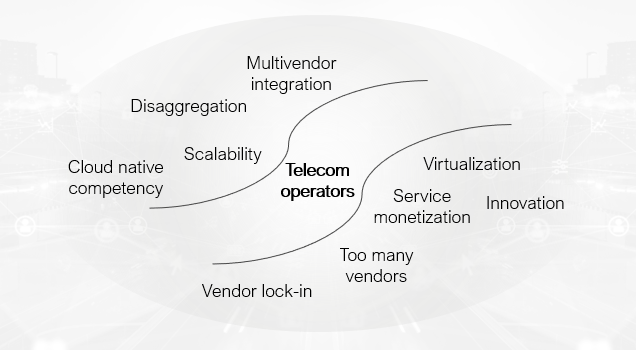With the explosive growth in the amount, and value, of data fueling today’s global environment, the need for businesses to readily adapt is critical for survival. IT managers are under enormous pressure to deliver applications and services that not only innovate and transform the business, but also keep up with the ongoing security threats to their data. The number one barrier to transformation is data privacy and security concerns. How IT managers protect and secure infrastructure against escalating threats can make or break your digital transformation initiatives.
Today, security threats can come from all different directions and could include things like identity theft, theft of IP, extortion, viruses, worms, etc. The security threat landscape has grown over the past few years, with 81% of businesses experiencing a security breach, and continues to evolve rapidly, which has been challenging for organizations to keep up with, manage and forecast. This requires periodically monitoring the threat landscape and assessing the organization’s resiliency to potential threats. With the unpredictability of threats, a practical approach would be to adopt a security framework that addresses not just traditional threats but one that adapts to today’s growing and ever-changing threat landscape.
Securing the data center has become crucial to securing business, as it has become a valuable target for malicious attackers seeking access to the information, applications, and services that organizations rely on every day. While the move to a software-defined data center (SDDC) — where compute, storage and networking are virtualized — can improve agility and support digital transformation efforts, virtualized data centers create a bigger need for security at the infrastructure layer. Security integrated within the hardware and software enables a more extensive security approach, along with greater agility and flexibility when dealing with security threats. As servers become more central in an SDDC architecture, server security becomes the foundation of overall enterprise security.
Together, Dell PowerEdge and VMware solutions enable simpler, scalable and more agile IT that is secure by default and flexible to meet the needs of diverse workloads. By automating and protecting hybrid cloud environments — from chip to firmware to virtual machine to container — Dell Technologies and VMware maximize your ability to withstand cyberattacks, protect information and transform IT. Our flexible, purpose-built solutions are designed to provide optimal performance across the edge, core and cloud with automation and consistency for physical and virtual environments — all backed by industry-leading support and the ability to leverage existing investments in joint solutions and services.
Server security is vital to securing IT infrastructure — it allows you to protect against, detect and recover from malicious attacks. Unfortunately, while security teams often focus on protecting the operating system and applications, less attention is given to the underlying server infrastructure, including hardware and firmware.
The Dell Technologies approach to security is built-in, with security integrated into every step of the Dell Secure Development Lifecycle. Cyber Resilient Architecture includes the embedded server firmware, the OS, peripheral devices, and the management operations within it to promote effective and reliable protection from attacks, providing for rapid recovery with little to no business interruption.
◉ Protect servers during every aspect of the lifecycle, including BIOS, firmware, data and physical hardware.
◉ Detect malicious cyberattacks and unapproved changes; engage IT administrators proactively.
◉ Recover BIOS, firmware and OS to a known good state; securely retire or repurpose servers.
Organizations can build a process to protect valuable server infrastructure and the data within it by detecting abnormalities, breaches and unauthorized operations and recovering from unintended or malicious events.
Just as security is built into PowerEdge, VMware leverages infrastructure to protect apps and data from endpoint to cloud — in real-time, across any cloud or device. As an integral and distributed part of the enterprise — the software stack incorporates all aspects of the technology ecosystem to deliver more effective security. The result is security that’s built-in and distributed with your control points of users, devices, workloads, and networks, with fewer tools and silos and better context.
For example, with the intrinsic nature of security on VMware software the following features can help protect you from threats:
VMware vSphere with Tanzu:
◉ Easily enable VM encryption and advanced security with vSphere Native Key Provider.
◉ Ease compliance audits with vSphere Product Audit Guides and FIPS validation.
◉ Deliver seamless enterprise and multifactor authentication with Identity Federation.
◉ Get intrinsic security and control with remote verification using vSphere Trust Authority.
◉ Apply security policies and storage limits to virtual machines and Kubernetes clusters with vSphere Pod Services.
VMware vSAN:
◉ vSAN encryption provides data-at-rest and data-in-transit security at cluster level including deduplication and compression.
◉ Over-the-wire encryption for data-in-transit between vSAN nodes.
◉ FIPs 140-2 validated encryption modules that meet U.S. federal requirements.
◉ New monitoring and analysis tools plus root cause analysis help customers rapidly diagnose and treat underlying issues.
VMware NSX:
◉ Attainable and efficient Zero-trust security because critical apps are locked down.
◉ Leverage IDS/IPS to defend against lateral threats.
◉ Complete L1-L7 controls with NSX Micro-segmentation.
◉ Logical DMZ created in software.
Dell PowerEdge and VMware automate and protect hybrid cloud environments to maximize your ability to endure cyberattacks, protect information, and transform IT. Jointly tested and backed by industry-leading support, our flexible, purpose-built solutions provide optimal performance across the edge, core and cloud to leverage existing investments in joint solutions and services.
Source: dell.com


























